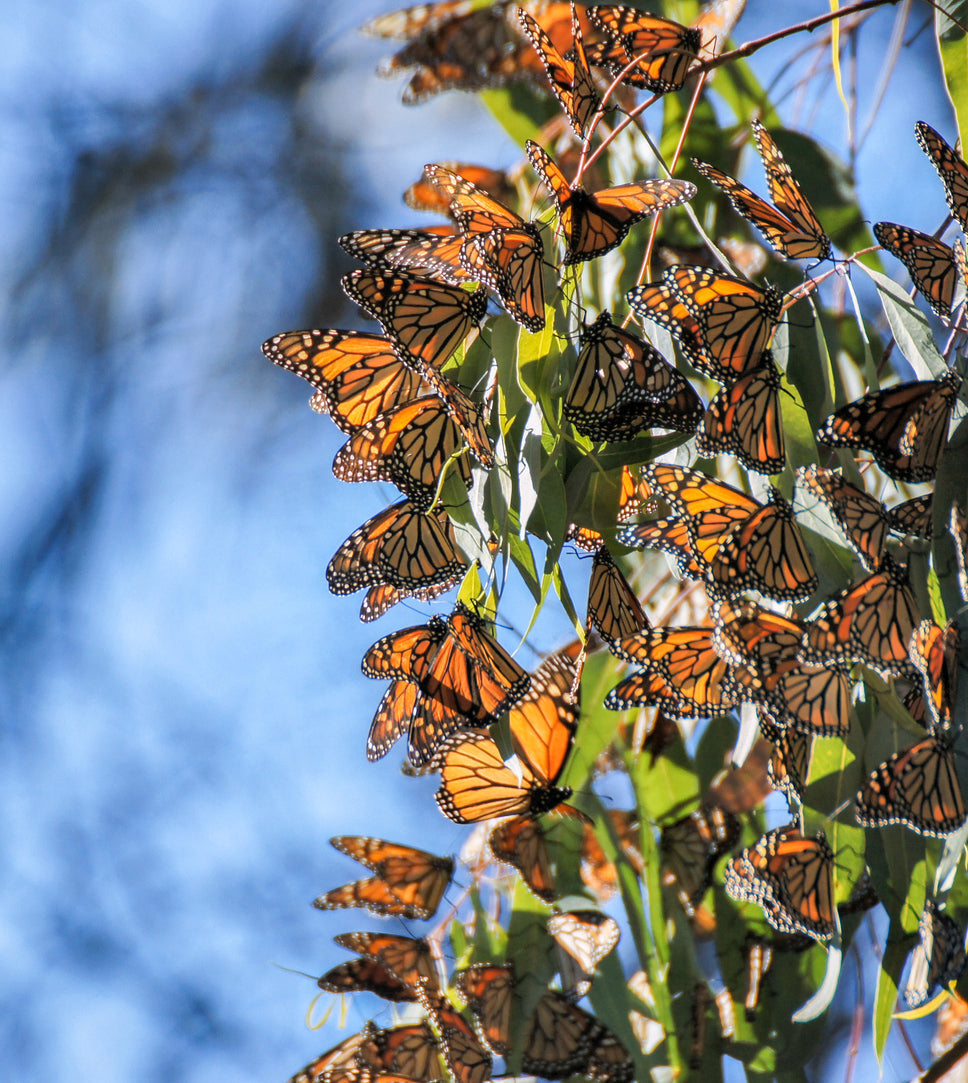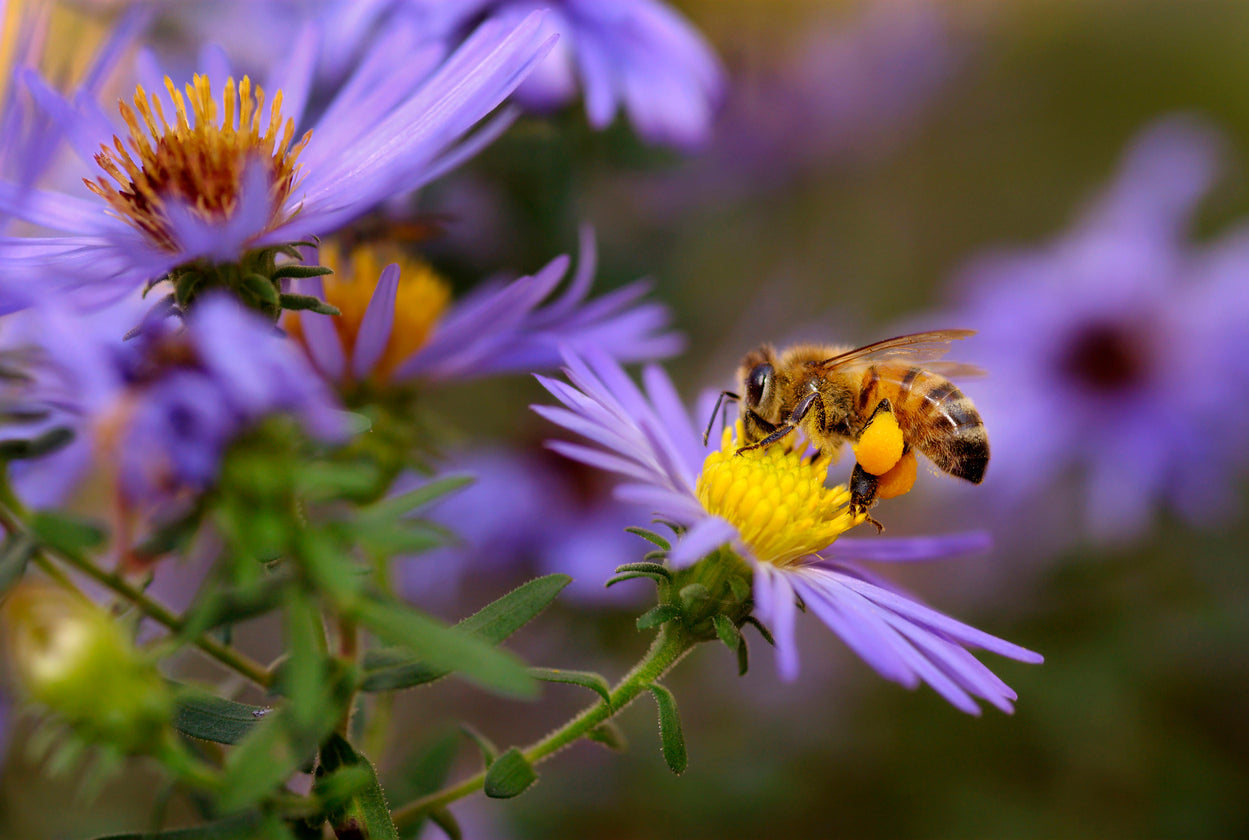Add description, images, menus and links to your mega menu
A column with no settings can be used as a spacer
Link to your collections, sales and even external links
Add up to five columns
Add description, images, menus and links to your mega menu
A column with no settings can be used as a spacer
Link to your collections, sales and even external links
Add up to five columns

The Unfortunate Reality of Butterfly Decline
By Spencer McManamna June 16, 2025 7 min read
It is no secret that butterfly populations are facing problems worldwide, with many different species (including our own Painted Lady butterflies) experiencing population loss, habitat loss, and hardships with long-distance migration. Butterflies are helpers and friends to our ecosystem, no matter where you live, due to their vital role as pollinators of some of our favorite foods. So how can we help? Read on to learn about the realities of butterfly decline in the modern day, and how we can help our unique, beautiful and valuable friends.
Are Butterflies Going Extinct?
Between 2000 and 2020, total butterfly populations fell by 22% across the 554 recorded species. Species level population declines are widespread with 13x as many species declining as increasing. This stark reality highlights the need to engage with conservation efforts and protect our many vulnerable butterfly species around the world.
What are the Primary Causes of Butterfly Decline?
There is no simple cause for these staggering declines in butterfly numbers. Rather, it is a combination of several different factors, all of which tie into and strengthen each others effects. These include Habitat Loss, Pesticides, Climate Change, Invasive Species, and Pollution.
Habitat Loss
Urban sprawl, agriculture, and infrastructure development fragment and destroy natural butterfly habitats by replacing prairies, forests, and wetlands with roads, buildings, and "monoculture" fields. This loss of diverse native vegetation eliminates crucial nectar sources and breeding grounds, as well as disrupting the delicate ecosystems that butterflies and other species rely on. As natural areas shrink and become isolated, butterfly populations decline due to reduced food, shelter, and migration corridors, threatening their survival and biodiversity overall.
Pesticides
"Neonicotinoids" are a group of insecticides used widely on farms and in urban landscapes. The widespread use of neonicotinoids and other pesticides poses a serious threat to butterflies and caterpillars by directly poisoning them or contaminating their food sources. These chemicals can impair nervous system function, reduce reproductive success, and weaken immune systems, making butterflies more vulnerable to disease and environmental stress. Pesticides also reduce the availability of nectar plants and host plants like milkweed, which caterpillars need to grow and survive. Exposure to these toxins disrupts key life cycle stages, leading to butterfly population declines and reduced chances of long-term survival.
Climate Change
Warmer temperatures and shifting seasons caused by climate change disrupt butterfly migration, mating, and overall life cycles by altering the timing of key biological events. Many butterfly species rely on precise seasonal cues for emerging, reproducing, and migrating, but earlier springs and unpredictable weather can cause plants to bloom before butterflies hatch, leaving them without essential nectar or host plants. These mismatches between life cycles and food availability can reduce survival and reproduction rates. Additionally, heat stress and habitat shifts may force butterflies to move to cooler areas, further fragmenting populations and increasing the risk of decline.
Invasive Species and Pollution
Invasive plants often outcompete native vegetation that butterflies depend on for nectar and as host plants for their caterpillars, leading to habitat degradation and reduced food availability. At the same time, pollution in the air, water, and soil can weaken butterflies’ immune systems, making them more vulnerable to disease and lowering their chances of survival. Pollutants can also harm or alter the growth of plants critical to butterfly diets. Additionally, artificial lights interfere with the nocturnal behavior and navigation of some butterfly species and other pollinators, disrupting natural rhythms, confusing orientation, and reducing successful mating and foraging.
Monarch Butterflies Population Decline

One of the most recognizable and charismatic butterfly species, the Monarch Butterfly is facing significant challenges as they attempt to survive in the 21st century. Read on as we explore the difficulties they experience and what we can do to help this colorful species.
Western Populations
The 28th annual Western Monarch Count, studying over wintering Monarchs in California, has reported a peak population of just 9,119 butterflies this winter. This is the second lowest overwintering population ever recorded since tracking began in 1997. This number is a sharp decline from the past three years, when more than 200,000 overwintering western monarchs were observed each year. It is only slightly above the all-time low of less than 2,000 monarchs in 2020, and well below the millions of butterflies observed in the 1980s that scientists consider a stable population level. monarchs encounter a variety of threats across their migratory range, including pesticides, habitat loss, and increasingly severe weather exacerbated by climate change.
Eastern Populations
The eastern monarch butterfly population in Mexico’s oyamel fir forests this past winter occupied 1.79 hectares, according to the latest survey released by the World Wildlife Fund (WWF) and the National Commission of Protected Natural Areas in Mexico (CONANP). This represents a 99% increase from last year’s 0.9 hectares in the 2023-2024 overwintering season. Researchers survey the eastern monarch population each winter when the butterflies cluster together in their overwintering sites in Mexico. Instead of counting individual monarchs, scientists estimate the population size by measuring the area of the trees the butterflies are occupying (in hectares). Each hectare is approximately 2.47 acres or just over two American football fields. While the number of monarchs per hectare can vary, estimates suggest there are between 20-30 million monarchs per hectare. A threshold of at least 6 hectares of overwintering monarchs is recommended to support a sustainable eastern migratory population. The current population remains below this target, which highlights the need for our continued conservation efforts.
Monarchs face many threats that contribute to their decline, whether it's loss of habitat that is vital for breeding, migrating, and overwintering, weather and climate conditions unfavorable for population growth, or of course the ever-present pesticide use. Monarchs also face many risks from natural enemies such as predators, parasites, and disease. It's clear that our butterfly friends are in danger, and here's why we should care:

Why Are Butterflies Important?
Butterflies play an incredibly important role in pollination, helping to fertilize flowering plants by transferring pollen as they feed on nectar. This process supports the reproduction of a wide variety of plants, including wildflowers and many vital crops, which in turn sustain ecosystems and provide food and shelter for countless other species. Butterflies contribute to plant diversity by traveling long distances and pollinating across wide areas, enhancing genetic variation and ecological resilience of our favorite plants!
In addition to their role as pollinators, butterflies take up an important spot on the food chain. Caterpillars and adult butterflies serve as prey for birds, bats, spiders, and other insects, supporting a wide range of predators. Because they are highly sensitive to environmental changes, butterflies also serve as indicators of ecosystem health. Declines in butterfly populations often signal broader ecological problems, such as habitat loss, pollution, or climate disruption, making their conservation essential to preserving biodiversity and the stability of natural systems.
How to Help Butterfly Populations
Don't be discouraged! There are many ways to help our vital and vulnerable butterfly friends. Read on to discover how you can help pollinators in your very own neighborhood!
Create Butterfly-Friendly Habitats
Planting native flowers, growing host plants for caterpillars, and providing shelter and water are among the most effective ways to support and restore your local butterfly populations. Native flowers offer the right nectar sources that local butterflies recognize and depend on, while host plants like milkweed are essential for caterpillars to feed and develop. Creating a butterfly-friendly habitat with shelter from wind and predators, as well as shallow water sources or moist soil for drinking and nutrient intake, helps butterflies thrive throughout their life cycle. These small but impactful actions contribute to healthier ecosystems and create safe and thriving "corridors" for butterflies in urban and rural landscapes.
Reduce or Eliminate Pesticide Use
Insecticides and herbicides are among the most destructive threats to butterfly life and reproduction, especially neuro-active chemicals such as neonicotinoids. Teaching kids and communities about natural alternatives for pest control fosters awareness and encourages eco-friendly habits that support pollinator health. Choosing organic gardening practices whenever possible creates safer, more welcoming habitats with native plants and chemical-free environments, helping your butterfly friends thrive and reproduce successfully. Organic practices include companion planting (growing certain plants together to naturally deter pests), healthy soil management (using compost and organic matter to increase plant immunity) and of course, beneficial bugs like our own Pink-Spotted Ladybugs to remove destructive pests!
Support Butterfly Conservation Projects
Helping conservation groups like the Xerces Society or Monarch Joint Venture through donations or participation helps fund research, habitat preservation, and public education important to butterfly survival. Volunteering in your local habitat restoration projects help to aid the native plant ecosystems butterflies rely on for food and reproduction.
Raise Awareness and Educate Others
The children are our future! Teaching butterfly lessons in classrooms and afterschool programs will create an early appreciation and understanding of these important pollinators, inspiring the next generation to care for their conservation. Giving presentations and sharing facts and photos on social media helps spread awareness to a wider audience, sparking interest and motivating friends, family and others to plant native flowers, avoid harmful chemicals, and support habitat protection. By educating and inspiring those around us, we build a community of budding entomologists whose collective actions can significantly help protect and restore butterfly populations.
Key Takeaways
Now you're informed, inspired and ready to help our butterfly friends! Focus on your local community by speaking with friends and family about the best ways to start planting a butterfly corridor. Use natural, organic and pesticide free methods to keep your busy garden growing, with a variety of colorful plants. It's important to remember that every little bit helps, and you may be seeing new butterflies in your neighborhood in no time!
Explore Butterfly Metamorphosis with Insect Lore
Ready to help butterflies? Let's Get Growing! Insect Lore's butterfly-raising kits are the perfect choice for any aspiring entomologist ready to observe and participate in their incredible life cycle. Don't forget to sign up for our Pollinator Club as well to earn points, discounts, exciting rewards and much more!
Also in Butterflies

Ultimate Guide to Pollinators
December 15, 2025 8 min read
Pollination is the transfer of pollen from an anther of a plant to the stigma of a plant, which makes fertilization and the production of seeds possible. Read on to discover the uniquely incredible world of pollination, which brings so many priceless gifts to our own world.

Tips for Implementing STEM Education in the Elementary Classroom
December 11, 2025 4 min read
In this article, we'll help explain practical strategies for bringing STEM into daily instruction and will explore specific butterfly-metamorphosis activities that enrich your students’ scientific understanding!

History of National Pollinator Month
December 11, 2025 4 min read
National Pollinator Month, observed every June, is dedicated to raising awareness about the essential role pollinators play in sustaining our ecosystems, agriculture, and global food supplies.

Enter Your Voucher Code Below
If you are experiencing difficulty redeeming your voucher on your desktop, please use a mobile device for a better redeeming experience.

We are unable to combine redemption fees. If you are redeeming 1-5 voucher codes, please complete separate purchases through our website for each voucher. If you are redeeming 6+ vouchers, please email us at customerservice@insectlore.com with your voucher codes and shipping address and we'll send you a custom invoice for payment.
Thank you for Redeeming your voucher!
You redeemed a $title

Don't miss this special one Time Offer.
Check the Box to Add this Special Offer to your Cart

Don't miss this special one Time Offer.
Check the Box to Add this Special Offer to your Cart
It looks like you are an Insect Lore UK/EU customer! You are visiting the Insect Lore USA website.
Click Insect Lore UK/EU website to be redirected to insectlore.co.uk.

